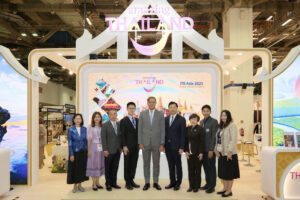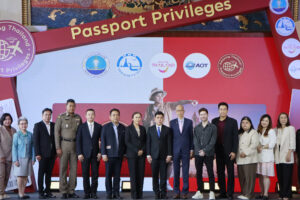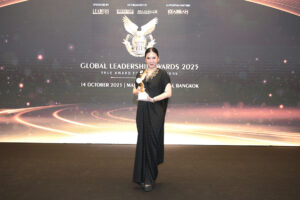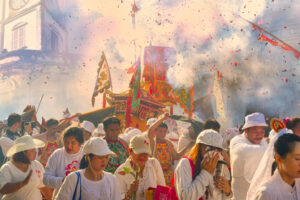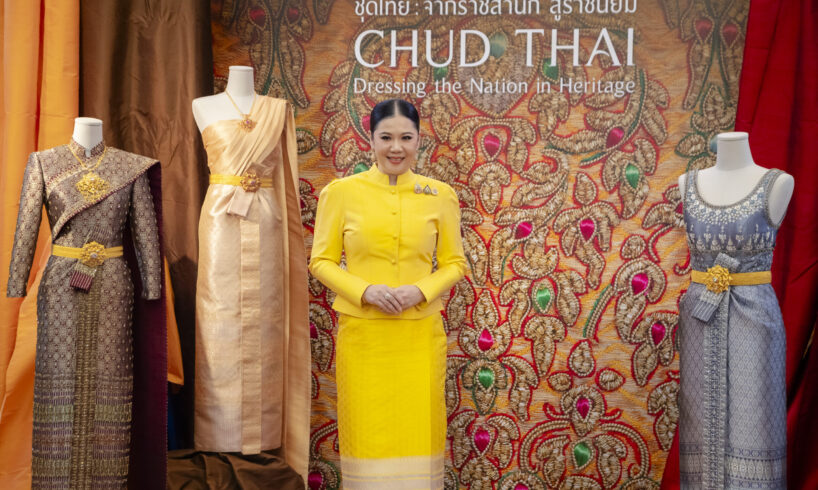
In a graceful campaign to honour Thai cultural identity, the Tourism Authority of Thailand (TAT) extends a warm invitation to Thai people everywhere to celebrate and express their national identity through the wearing of Chud Thai Phra Ratchaniyom, or Thai National Costume. Under the theme Chud Thai: Dressing the Nation in Heritage, this initiative calls on the Thai public to take part in a proud cultural movement that brings tradition into the present.
The initiative encourages all generations to reconnect with the elegance, symbolism, and significance of these eight official styles—reaffirming traditional dress as a living expression of Thai refinement, unity, and pride on the world stage.
These eight styles—Thai Ruean Ton, Thai Chitralada, Thai Amarin, Thai Boromphiman, Thai Chakri, Thai Dusit, Thai Siwalai, and Thai Chakkraphat—are expressions of identity, history, and artistry. Their origins trace back to 1960, when Their Majesties King Bhumibol Adulyadej The Great and Queen Sirikit The Queen Mother undertook a historic state visit to the United States and Europe. The visit prompted the need for a wardrobe that would both honour Thai tradition and resonate with the international diplomatic stage.
Her Majesty Queen Sirikit The Queen Mother took it upon herself to study historical Thai court dress in depth. With the support of a dedicated team of advisors, Her Majesty created a collection that was not a mere revival of the past but a refined adaptation for contemporary state and ceremonial functions. Over the decade that followed, the designs were formalised as Phra Ratchaniyom (Royal Favour), and have since become recognised as the official Thai National Costume for women—each style connected to a historic palace or throne hall and imbued with deep cultural meaning.
The Queen Sirikit Museum of Textiles now brings this legacy to life. The exhibition Chud Thai: Dressing the Nation in Heritage is currently on view in Gallery 1 at the museum, located within the Grand Palace. Visitors can explore the rich craftsmanship and historical significance of the eight styles—some of which have never been publicly displayed before. Garments once worn by Her Majesty Queen Sirikit The Queen Mother are presented with reverence and curatorial care.
At the opening of the exhibition on 15 August 2025, Her Royal Highness Princess Sirivannavari Nariratana Rajakanya delivered a heartfelt message:
“I warmly invite Thai women of all ages—including our LGBTQ community and everyone, whether part of the fashion world or not—to wear the eight styles of Chud Thai Phra Ratchaniyom with pride and understanding. Wear them correctly, with confidence and dignity, as a natural part of our lives and identity. Let it be a tribute to Her Majesty the Queen Mother—our first designer, our first stylist—whose far-reaching vision created these timeless expressions of Thainess.”
This message reflects more than fashion—it is a personal gesture of cultural honour. Wearing Chud Thai becomes an act of respect, not only for tradition, but for the Queen Mother’s role as a visionary who shaped Thailand’s national identity through design.
Understanding the Eight Styles of Chud Thai Phra Ratchaniyom
Each of the eight styles reflects varying levels of formality and occasion, offering Thai women timeless options for both ceremonial and social settings.
Thai Ruean Ton, named after the teak houses at Dusit Palace, is the most informal and versatile. Made from silk or cotton, it includes a three-quarter-sleeved blouse paired with a plain or patterned ankle-length skirt—ideal for everyday wear.
Thai Chitralada, named after the royal residence, is a formal daytime ensemble featuring a high-collared, long-sleeved silk jacket and a plain silk or brocade wrap skirt.
Thai Amarin, slightly more formal, is an evening variation of Chitralada. It pairs a silk jacket with a richly brocaded skirt, and takes its name from the Amarin Winitchai Throne Hall.
Thai Boromphiman is a one-piece silk and metal-thread brocade dress with long sleeves and a stand collar. Its front-pleated skirt reflects 19th-century court fashion, suitable for formal events and official ceremonies.
Thai Dusit, formal evening wear named after the Dusit Maha Prasat Throne Hall, features gold brocade and an embroidered bodice—combining Thai detail with a Western eveningwear silhouette.
Thai Chakri, among the most recognisable styles, is named after the Chakri Maha Prasat Throne Hall. It features a front-pleated brocade skirt with a traditional shoulder sash, often worn at weddings and royal ceremonies.
Thai Siwalai, named after the Siwalai Maha Prasat Throne Hall, is worn for high-level royal functions. It features a brocade bodice joined to a matching pleated skirt, complemented by an elegant shoulder cloth.
Thai Chakkraphat, the most regal of the styles, is reserved for formal banquets and royal occasions. It includes a strapless bodice covered by two pleated and embroidered shoulder cloths, and a brocade skirt—signifying the highest level of ceremony and honour.
While rooted in tradition, each style offers the wearer room for interpretation—through fabric choice, colour, and accessory styling. From understated elegance to full ceremonial splendour, the adaptability of Chud Thai empowers every Thai woman to embody this legacy in her own way.
The Queen Sirikit Museum of Textiles is open daily from 09.00–16.30 Hrs. (last admission at 15.30 Hrs.) and closes at 16.00 Hrs. on Saturdays. For more information, please visit: qsmtthailand.org or royalgrandpalace.th or follow @ qsmtthailand on Facebook.
Wearing Chud Thai is not merely a return to heritage—it is a living statement of pride, unity, and identity.
TAT Governor Ms. Thapanee Kiatphaibool describes this cultural gesture as a “Grand Moment for Life.” She emphasises that wearing the Thai National Costume is not only about preserving tradition, but also about embracing joy and creativity.
“I warmly invite Thai people everywhere to wear Thai traditional dress and showcase this proud cultural identity to the world,” she noted, echoing the spirit of this extraordinary national invitation.
Thailand presents its cultural richness to the world through its enduring traditions, refined craftsmanship, and the elegance of its people—draped in history, grace, and meaning. This moment marks an opportunity for Thai communities everywhere to honour their heritage and represent the nation’s identity on the global stage.
The Eight Styles of Chud Thai Phra Ratchaniyom
The post Chud Thai: A Timeless Invitation to Dress the Nation in Heritage appeared first on TAT Newsroom.
..
